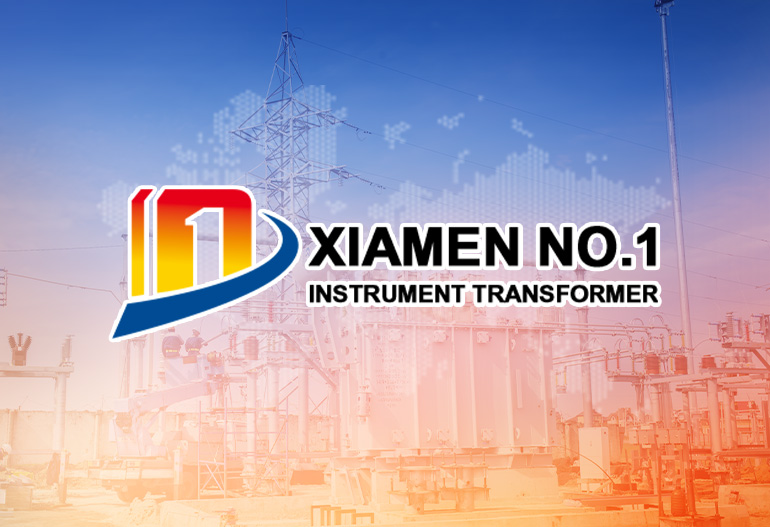High-rise buildings, characterized by their complex structures, large occupancy, and numerous electrical systems, pose significant challenges for fire safety. The reliability of fire power supplies, which power critical fire-fighting equipment such as fire pumps, smoke exhaust fans, and emergency lighting, is of utmost importance. Current transformers (CTs) play a pivotal role in fire power supply monitoring systems by accurately measuring electrical parameters, enabling real-time detection of anomalies and ensuring the continuous operation of fire-fighting facilities. This paper explores the specific applications, technical requirements, and implementation strategies of CTs in high-rise building fire power supply monitoring.
Fire power supplies must remain operational during a fire to ensure that fire-fighting equipment can function effectively. Any failure in the power supply can severely compromise the safety of building occupants and the success of fire suppression efforts. Monitoring systems need to detect issues such as overcurrent, under-voltage, phase imbalance, and disconnection promptly to prevent power supply failures.
Given the rapid spread of fires in high-rise buildings, real-time monitoring of fire power supplies is essential. Early detection of electrical faults or abnormal operating conditions allows for timely intervention, reducing the risk of fire power supply outages. The monitoring system should be able to send out alarms immediately when any parameter deviates from the normal range.
Fire power supply monitoring in high-rise buildings must comply with relevant national and international standards and regulations. For example, in China, standards such as GB 50116 - 2013 Code for Design of Automatic Fire Alarm Systems and GB 51309 - 2018 Technical Code for Fire Emergency Lighting and Evacuation Indicating Systems specify the requirements for fire power supply monitoring, ensuring the system's reliability and effectiveness.
CTs are primarily used to measure the current flowing through fire power supply circuits. By accurately measuring the current, the monitoring system can determine the load status of fire-fighting equipment. For example, if the current of a fire pump exceeds the rated value, it may indicate a problem such as a clogged pipeline or a malfunctioning motor. Continuous current monitoring helps in early fault diagnosis and maintenance planning.
Overcurrent Detection: When an overcurrent occurs in the fire power supply circuit, it could be a sign of a short circuit or an overload. CTs can detect these abnormal current levels and trigger alarms. For instance, if the measured current is 1.5 times the rated current for a prolonged period, the monitoring system will send out an overcurrent warning, prompting maintenance personnel to investigate and resolve the issue.
Phase Imbalance Detection: Uneven distribution of current among the phases can lead to equipment overheating and reduced efficiency. CTs installed on each phase can measure the phase currents, and the monitoring system can calculate the phase imbalance ratio. If the phase imbalance exceeds a predefined threshold (e.g., 10%), an alarm will be issued, indicating the need for corrective action.
Ground Fault Detection: CTs can also be used to detect ground faults in the fire power supply system. By measuring the zero-sequence current (the vector sum of the phase currents), the monitoring system can identify when a ground fault occurs. A small but abnormal zero-sequence current may suggest a leakage current to ground, which could potentially cause electrical shock or a fire hazard.
In addition to safety - related functions, CTs can assist in energy management of fire power supplies. By continuously monitoring the current, the system can calculate the power consumption of fire-fighting equipment over time. This data can be used to analyze the energy efficiency of the equipment, identify energy - wasting patterns, and optimize the operation of the fire power supply system. For example, if a smoke exhaust fan consumes excessive power during normal operation, it may indicate a mechanical problem or an inefficient control strategy.
Rating Selection: The current rating of CTs should be selected based on the maximum expected current in the fire power supply circuit. It is recommended to choose a CT with a rating 120 - 150% of the rated current of the connected fire-fighting equipment to ensure accurate measurement under normal and abnormal operating conditions. For example, if a fire pump has a rated current of 50A, a CT with a rating of 60 - 75A should be selected.
Accuracy Class: High accuracy is required for fire power supply monitoring to ensure reliable fault detection. CTs with an accuracy class of 0.5S or higher are typically preferred. These CTs can provide accurate current measurements within a small error margin, enabling precise monitoring of electrical parameters.
CTs should be installed at key points in the fire power supply circuit, such as at the incoming power lines, the feeder lines to major fire-fighting equipment, and the distribution panels. Proper installation location ensures comprehensive monitoring of the entire fire power supply system. For example, installing CTs at the incoming power lines of the fire-fighting equipment room allows for overall monitoring of the power supply quality, while CTs on the feeder lines to individual equipment can provide detailed information about the operation of each device.
High-rise buildings are filled with various electrical and electronic devices that can generate electromagnetic interference (EMI). To ensure the accuracy of CT measurements, effective anti-interference measures must be taken. Shielded cables should be used for CT secondary connections, and the CT housing should be properly grounded. Additionally, the installation location of CTs should be away from strong electromagnetic interference sources, such as large motors and variable frequency drives.
CTs need to be integrated with the fire power supply monitoring system through appropriate communication interfaces. Common interfaces include RS - 485, Modbus, and Ethernet. RS - 485 is a widely used serial communication interface that allows multiple CTs to be connected in a bus - topology, facilitating data transmission over relatively long distances. Modbus is a communication protocol that enables seamless integration of CTs with monitoring devices, ensuring reliable data exchange. Ethernet interfaces are becoming increasingly popular due to their high-speed data transfer capabilities and compatibility with modern networked monitoring systems.
The data collected by CTs is processed and analyzed by the fire power supply monitoring system. The system uses algorithms to calculate electrical parameters such as voltage, power, and energy consumption based on the measured current data. Advanced data analysis techniques, such as trend analysis and fault prediction algorithms, can be applied to identify potential problems before they escalate into actual failures. For example, by analyzing the historical current data of a fire pump, the system can predict when the pump may require maintenance based on the trend of increasing current.
In a 50 - story commercial high-rise building, a fire power supply monitoring system with CTs was installed. During routine operation, the CTs detected a gradual increase in the current of one of the fire pumps. The monitoring system analyzed the data and predicted that the pump's motor bearings were likely to be worn out. Maintenance personnel were promptly dispatched, and upon inspection, the prediction was confirmed. By replacing the bearings in a timely manner, a potential failure of the fire pump during a fire was avoided, ensuring the continuous operation of the fire-fighting system.
In a residential high-rise building, CTs installed in the fire power supply circuit detected a phase imbalance in the emergency lighting power supply. The monitoring system immediately issued an alarm, and maintenance personnel found that a loose connection in the distribution panel was causing the problem. After tightening the connection, the phase imbalance was resolved, ensuring the normal operation of the emergency lighting system, which is crucial for safe evacuation during a fire.
Current transformers are indispensable components in high-rise building fire power supply monitoring systems. Their accurate measurement of electrical parameters, combined with effective fault detection and integration with monitoring systems, significantly enhances the safety and reliability of fire power supplies. By carefully considering CT selection, installation, and integration requirements, high-rise building owners and managers can ensure that their fire power supply monitoring systems operate effectively, providing a vital line of defense against fire-related power failures and safeguarding the lives and property of building occupants. As building technologies continue to evolve, the role of CTs in fire power supply monitoring is expected to become even more critical, with further advancements in measurement accuracy, communication capabilities, and data analysis techniques.



